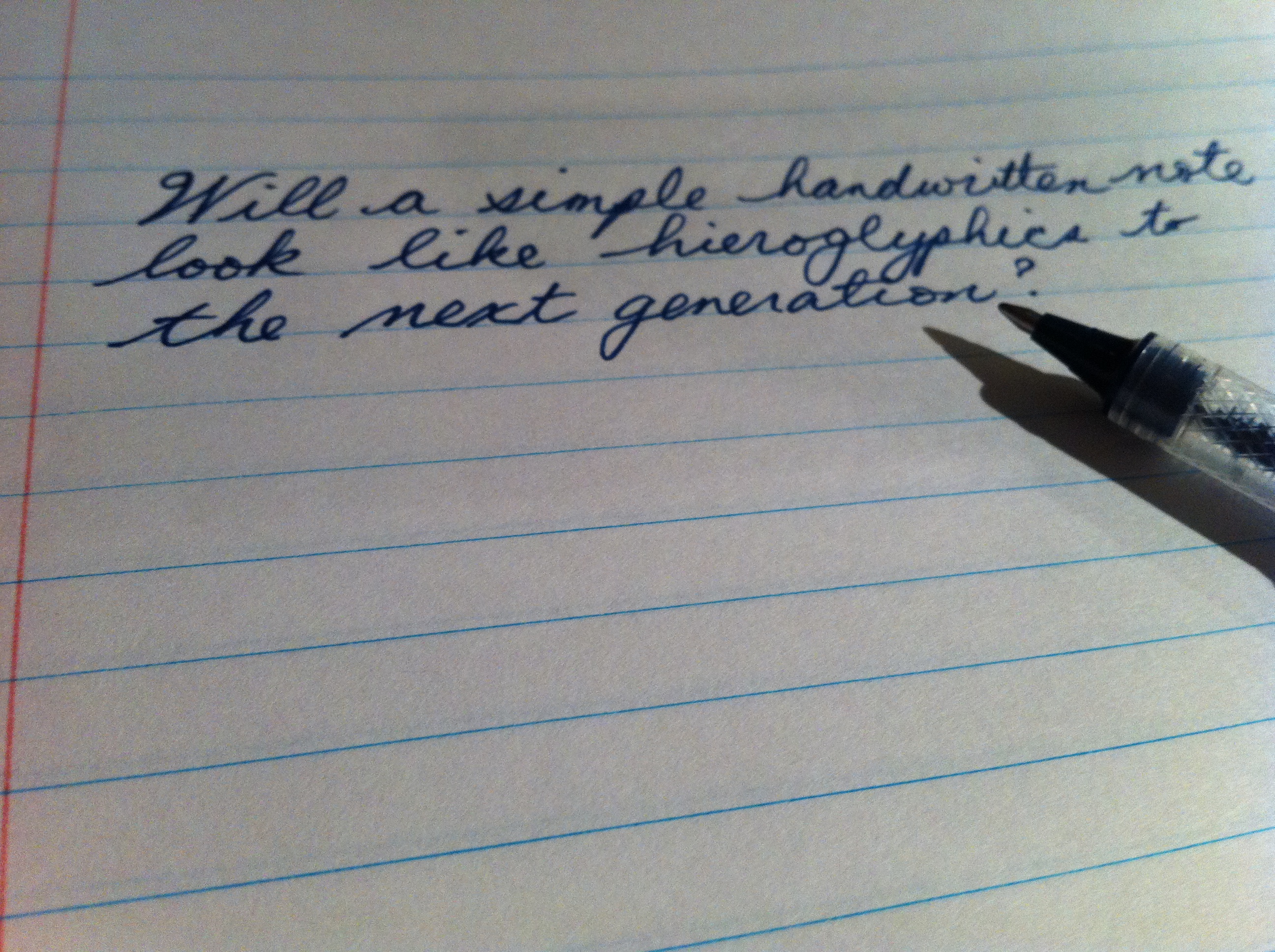I’m in the middle of revising my first book – Teaching the Male Brain – and I’m coming up with LOTS of new information that I’ll be sharing with you in the months to come. In the meantime, I have a topic I want to bring up because it has been something most of the boys’ schools I’ve been working with in the past year are interested in – HANDWRITING.
 The question is, should we bother to teach handwriting given the growing use of technology, and if we teach children to write, should we bother to teach cursive? Those of you who read this blog who are not in the United States may be a bit confused as your children are learning cursive from the beginning, but in the US, many children are not being exposed to cursive writing and the result is that they cannot read cursive, nor do they have a legal signature. Aside from that, is there any reason to teach cursive?
The question is, should we bother to teach handwriting given the growing use of technology, and if we teach children to write, should we bother to teach cursive? Those of you who read this blog who are not in the United States may be a bit confused as your children are learning cursive from the beginning, but in the US, many children are not being exposed to cursive writing and the result is that they cannot read cursive, nor do they have a legal signature. Aside from that, is there any reason to teach cursive?
YES!!! Read this terrific piece from the Science pages of the NY Times – it’s an excellent review of the literature on the subject which refers to research by the two leading scientists in the field: Virginia Berninger at the University of Washington and Karin James (no relation) at Indiana University. Basically, what both of these scientists report is that children and adults learn better when they hand write than when they type. And, writing in cursive means that the child learns it better probably because of the original messy attempt. As a child rewrites letters to get them closer and closer to a neat version, the brain learns all the variations of the letter which will help him recognize the letter more readily in the future. Who knew that boys’ messy handwriting was an advantage?
I’ve been citing one of Berninger’s studies for a long time because she discovered that children can write faster than they can type, and that when they write, they use more words because it is easier to put the words on the paper. She also reports that after brain injuries, the ability to produce printing and cursive may not be the same, nor may the ability to read printing or cursive. What this indicates is that the site in the brain for printing and cursive may not be in the same place. So the child who can read both printing and cursive is better able to use a wider variety of sources for information.
“So there” to people who think that teaching cursive is unnecessary – it isn’t! It also isn’t hard to teach cursive. If your child is not getting instruction in cursive at school, I recommend that you get Handwriting without Tears – make sure that you get the cursive version. There are different levels for different ages – start with the lowest even if your child is older than that so that he has a chance to practice. Point out to your child that writing cursive is faster than printing. You may be interested to know that in cursive, children don’t make as many reversal mistakes, such as confusing b and d or p and q. At least one source from England says that handwriting can help children who are identified with dyslexia.
One concern: What about the child with dysgraphia/dyspraxia? Those are the same condition, but in the US the focus is on handwriting and so is known as dysgraphia and in the rest of the world, the focus includes other issues as well. I have the disorder and really cannot write easily or legibly by hand. However, I learned to handwrite and I still take notes best by hand. I know that if I need to remember something that it is better that I write the note in my pocket notebook. If I put it on the calendar on my phone, the information fades too rapidly. What I learned to do in school was to take notes by hand and then go home and type them up so that I could read them later. I don’t think that many school children will do that, but it does work. Anytime that I write something twice, I know it much better than if I looked at it. I can only write this on the computer, but I think about it long before so it has been processed more than once.
Good luck with your son and his handwriting. Remember, messy handwriting is part of the process so don’t obsess about his attempts to make it neater. Point out that grownups write and learning to write is part of the growing up process. If he says that he will only use a computer or word processor, tell him that he can use a calculator to do complex math, but if he doesn’t learn the basics of numbers, the calculator is of no use. Writing is the basics of learning language and for boys, it really helps them in all aspects including reading.
